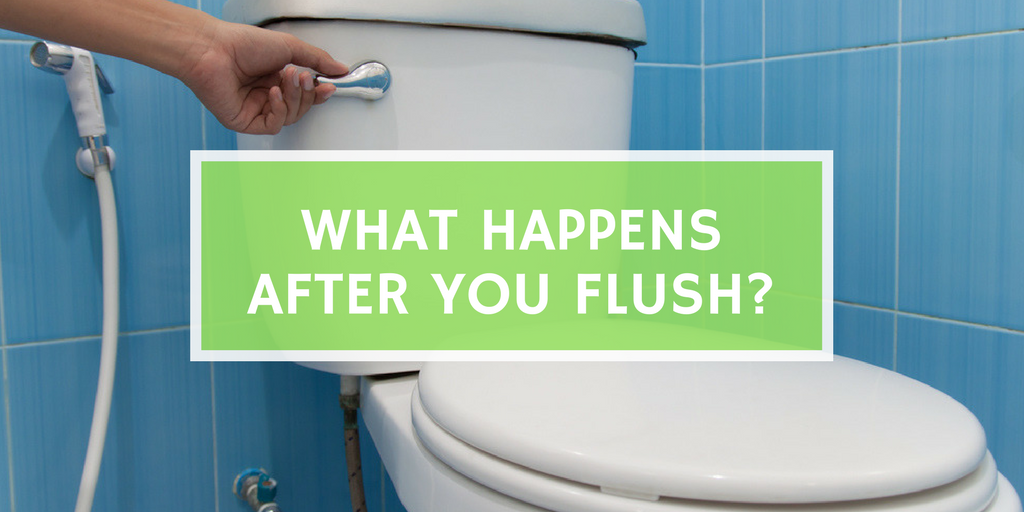How does a toilet work?
If you have a toilet in your home, consider yourself lucky. Did you know that more people in the world have a cell phone than have access to a toilet? According to the World Health Organization, about a third of all the people on Earth – almost 2.5 billion men, women and children – don’t have a proper toilet available for their use. Whatever problems your toilet may give you, you should be thankful that it’s there!
Your toilet contributes greatly to your quality of life, although we take these systems for granted. (If your toilet is not functioning as it should, with water or waste going the wrong direction, don’t hesitate to call Benjamin Franking Plumbing Bay Area. There are many vital reasons you do not want any bacteria from waste invading your home).
So how does a toilet perform the valuable service that it provides? The magic ingredient that keeps things flowing is gravity, the attractive force that helps keep your toilet on the floor, your feet on the ground and your house from floating into space.
How a Toilet Works
Above the toilet seat is a tank (in older home, you may have seen this tank several feet above the toilet seat). The tank is filled with water, which is used to flush the toilet. One of the things that keeps the toilet flush-ready is an inlet valve. This valve senses whether the tank has enough water to flush properly, allowing water to come in when the tank is empty, and stopping the of water when it is full.
How does the valve know that the tank is full? This news arrives thanks to the motion of a lever with a “float ball” attached to it. If you’ve ever taken the lid off your toilet, you may have seen an orange or black piece of rubber with a balloon-like shape. As water comes into the tank, it lifts the float ball. When the water raises the ball to the pre-determined height that signifies the tank is full, the valve stops the flow.
Toilets and Water Conservation
If you’ve ever looked into strategies for water conservation, you may have run across the suggestion that you put bricks in the tank to displace some of the water. The bricks will displace some of the water, requiring less water to enter the tank for the float ball to raise sufficiently to stop the flow. Of course, you may or may not be satisfied with the resulting flush! Newer toilets require much less water to flush.
To flush waste into the drain pipe and on the journey down the plumbing line to the sewer line, there is a chain attached to the toilet handle. The chain is attached to a “flapper” a type of stopper sitting over a pipe above the toilet bowl. When you push the toilet handle down, this causes the flapper to raise and allows the water from the tank to flow into the toilet bowl. When you release the handle, the flapper closes the drain to the bowl and the tank begins to refill. You may have experienced a failure of this step, hearing the toilet running until you jiggle the handle, indicating that the flapper has now closed off the pipe. (When this is a consistent problem, the inner parts of your toilet must be replaced.)
Now gravity does its work, sending the water that is flowing into the toilet down the toilet pipe, along with the waste and other material you have added to the water. (Note: it is highly recommended that this is nothing more than toilet paper, as this can lead to clogs and overflows.)
Then what? There is a bend in the pipe just below the toilet, an “S” shape that stops the air from the sewer line from entering your home once the flushing action is completed, called a toilet trap. As an additional benefit, this bend also helps the flushing process occur more rapidly.
Another element of this system is the toilet vent, a pipe that generally exits through the roof and allows outside air into the plumbing system, helping to maintain proper air pressure.
Into the Sewer Line
Once the waste from the toilet has passed the bend, it’s headed toward the main sewer line. There it’s combined with other liquids such as drainage from sinks and washing machines – known as “greywater” – and routed through the sewage system to a treatment plant. At the treatment plant, the water undergoes processes to remove contaminants and is then routed elsewhere – either to a waterway or ocean, or to a park, sports field or other destination to be used for irrigation purposes.
Although this strategy has not yet achieved wide public acceptance, some municipal utilities in California are working toward the goal of cleaning wastewater so thoroughly that it can be recycled as drinking water. What has been described as a “toilet to tap” concept may need to be re-branded before large number of citizens would be willing to participate in such a system, but in a drought-stressed state, strategies such as this are likely to become more and more common. Rest assured that no public health official would allow such a thing to go forward without extensive testing and proof of water safety.
In the meantime, you can be assured that once something goes down your toilet drain that’s the last you will see of it. If any problem arises, from the simple to the complex, or to replace a toilet with a water-saving model, you can count on Benjamin Franklin Plumbing Bay Area to quickly and professionally restore your toilet, so it is functioning properly.


